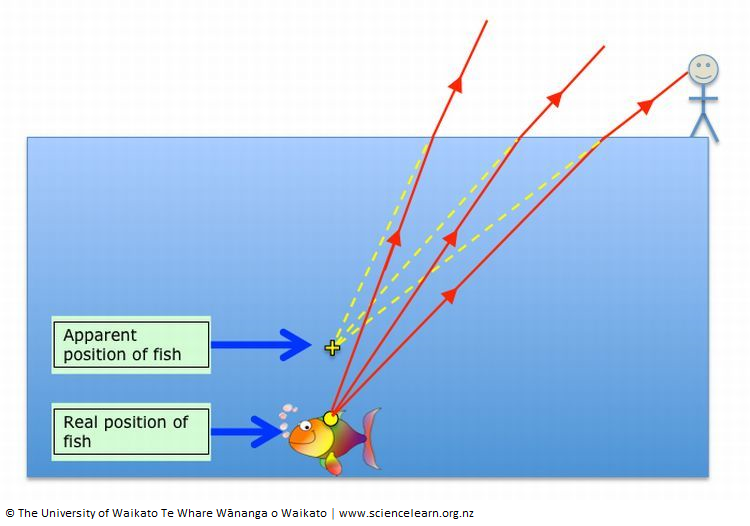

Image: https://openverse.org/, 2023


Light coming from the fish refracts (changes direction) when it hits the surface. A person above the water sees the apparent position of the fish closer to the surface than the real position of the fish.
Light is a form of electromagnetic radiation that is visible to the human eye. It behaves like a particle at times and like a wave at other times. Light moves at the constant speed of about 300,000 km/sec when they are in a vacuum. The light from the Sun takes about 7 minutes to reach Earth. And, it takes over 4 years for light to get to the nearest star from the Sun.
Summarised from Light and Optics for Kids, 2023.
G. 2017. 1:00
E. 2017. 5:53
Have your students ever wondered why they can create shadows on a sunny day but not when it's cloudy? Or why they can see through windows but not walls? What does light have to do with all of this anyway!?
This animated Miniclip examines the behaviour of light when it comes into contact with transparent, translucent, or opaque materials. Using these three types of materials, it shows why some create shadows and why others don’t. It also provides a brief introduction to reflection and refraction using mirrors and water.
G. 2017. 0:30
Light travels in straight lines. When light hits an object, it is reflected (bounces off) and enters our eyes. This is how we see the object.
G. 2017. 0:49
When light from an object is reflected by a surface, it changes direction. It bounces off the surface at the same angle as it hits it. Smooth, shiny surfaces such as mirrors and polished metals reflect light well. Dull and dark surfaces such as dark fabrics do not reflect light well.